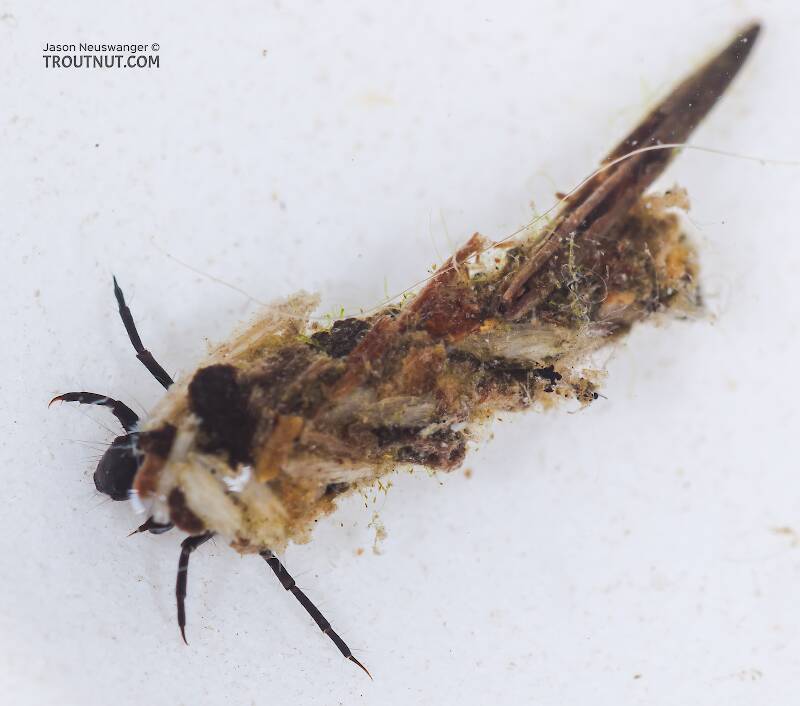
Salmonflies
Pteronarcys californica
The giant Salmonflies of the Western mountains are legendary for their proclivity to elicit consistent dry-fly action and ferocious strikes.


Stonefly Species Sasquacapnia sasquatchi (Little Snowflies)
Species Range
Physical description
Most physical descriptions on Troutnut are direct or slightly edited quotes from the original scientific sources describing or updating the species, although there may be errors in copying them to this website. Such descriptions aren't always definitive, because species often turn out to be more variable than the original describers observed. In some cases, only a single specimen was described! However, they are useful starting points.
Description from GBIFthe Global Biodiversity Information Facility
Source: A Review Of The Genus Bolshecapnia Ricker, 1965 (Plecoptera: Capniidae), And Recognition Of Two New Nearctic Capniid Genera
Male epiproct (n = 3). Length 718 µm, width at mid-length about 147 µm, width near base 158 µm, greatest width 194 µm, subapical width at narrowest point 70 µm. Epiproct body broad basally and narrowed gradually to subapical bottleneck (Figs. 67, 70 - 71) in dorsal and lateral aspect; apex bearing complexly lobed membranous tissue above a well formed ventral lip (Figs. 69, 71). Median groove well developed, with a pair of parallel ridges extending subapically to near base of dorsobasal sclerites (Figs. 67, 70). Dorsobasal sclerites short, broad and apically pointed (Figs. 68, 72). Tergal process (n = 2). A pair of hairy, low rounded hump-like structures located on tergum 9 (Figs. 67, 71). Vesicle (n = 3). Similar to Sasquacapnia missiona but slightly more rounded in ventral aspect.
Female subgenital plate (n = 1). Correctly associated and illustrated in figs. 13 - 14, by Baumann & Potter (2007). Ricker’s earlier figure for this structure is now attributed to Sasquacapnia missiona (Baumann & Potter 2007). The posterior margin of the plate is truncate and scarcely projects beyond the posterior margin of sternum 8.
New combination http: // lsid. speciesfile. org / urn: lsid: Plecoptera. speciesfile. org: TaxonName: 505899 (Figs. 67 - 72)
Start a Discussion of Sasquacapnia sasquatchi
Stonefly Species Sasquacapnia sasquatchi (Little Snowflies)
Species Range
Common Names
Resources
- NatureServe
- Integrated Taxonomic Information System
- Global Biodiversity Information Facility
- Described by Ricker (1965)

